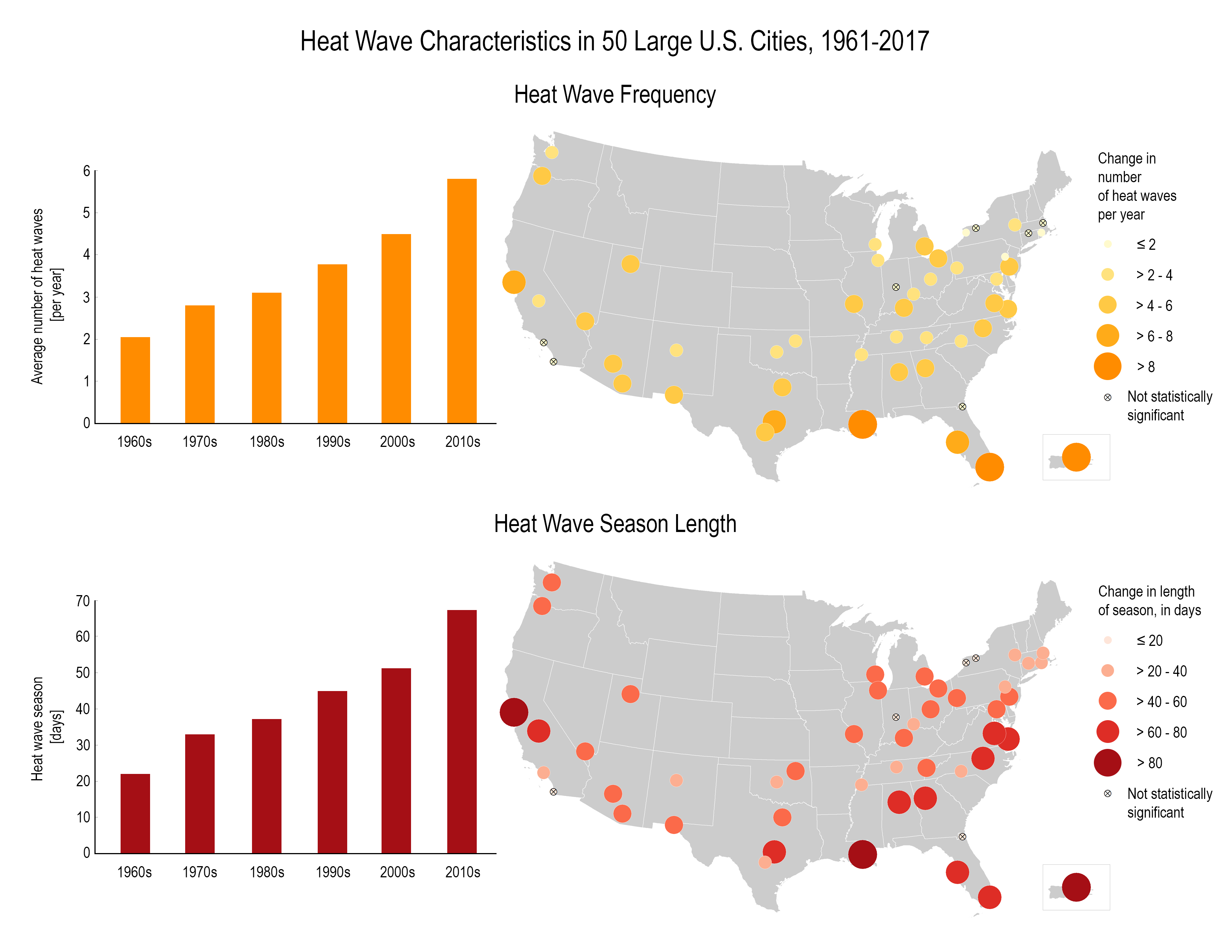Article written by Dan Barrie, MAPP Program Manager
A new indicator that characterizes heat waves in the United States shows staggering changes in this phenomenon over the past few decades. Many cities in the U.S. are now experiencing 5-10 more heat waves per year than they did in the 1960s. Moreover, the length of the season when heatwaves happen has increased by 2-3 months in many locations over just these few decades. These are clear indicators of the climate change signal and directly relate to mortality issues. NOAA has invested in the development of an interagency climate indicator system, which provides foundational support for the National Climate Assessment. Data was provided by NOAA/NCEI, EPA provided scientific oversight in crafting the indicator, and the indicator was implemented by the team down at NCEI’s Technical Support Unit.
Photo credit: https://www.globalchange.gov/browse/indicators/us-heat-waves
These bar graphs and maps show changes in the number of heat waves per year (frequency) and the number of days between the first and last heat wave of the year (season length). These data were analyzed from 1961 to 2017 for 50 large U.S. metropolitan areas. The graphs show averages across all 50 metropolitan areas by decade. The size/color of each circle in the maps indicates the rate of change per decade. Hatching represents cities where the trend is not statistically significant.
About MAPP
The Modeling, Analysis, Predictions, and Projections (MAPP) Program is a competitive research program in NOAA Research’s Climate Program Office. MAPP’s mission is to enhance the Nation’s and NOAA’s capability to understand, predict, and project variability and long-term changes in Earth’s system and mitigate human and economic impacts. To achieve its mission, MAPP supports foundational research, transition of research to applications, and engagement across other parts of NOAA, among partner agencies, and with the external research community. MAPP plays a crucial role in enabling national preparedness for extreme events like drought and longer-term climate changes. For more information, please visit www.cpo.noaa.gov/MAPP.
View More MAPP News.




